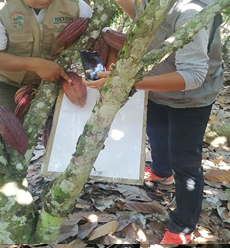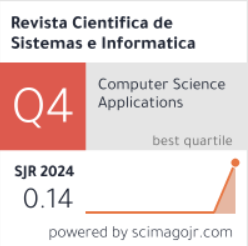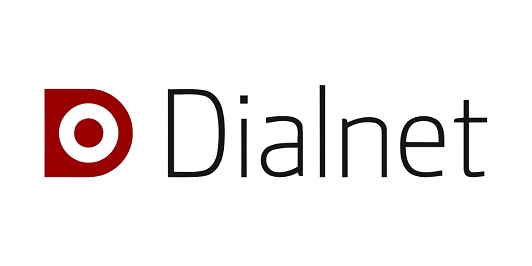Artificial vision model based on convolutional neural networks for black pod identification in cacao plantations
DOI:
https://doi.org/10.51252/rcsi.v5i1.678Keywords:
early detection, deep learning models, image analysis, automatic classification, precision agricultureAbstract
Early detection of black pod in cocoa plantations represents a key challenge in the agricultural sector, as it affects yield and grain quality. The lack of advanced methods hinders timely identification. This study develops artificial vision models based on convolutional neural networks (CNN) to improve detection. Over nine months, we collected and labeled 1,982 images of affected pods from five plots in the Shitarillo sector, Alto Saposoa district, San Martín. We implemented YOLOv8, InceptionV3, and VGG19, applying transfer learning to optimize classification. The dataset was split into 70% for training, 20% for validation, and 10% for testing. YOLOv8 and InceptionV3 achieved an average accuracy of 79%, outperforming VGG19. Evaluation metrics, along with ANOVA and Tukey tests, confirmed that both models provided superior performance with no significant differences between them. YOLOv8 stood out for its greater robustness and accuracy, suggesting its implementation in early detection systems to optimize disease control in cocoa plantations.
Downloads
References
Ahmad, A., Saraswat, D., & El Gamal, A. (2023). A survey on using deep learning techniques for plant disease diagnosis and recommendations for development of appropriate tools. Smart Agricultural Technology, 3, 100083. https://doi.org/10.1016/j.atech.2022.100083
Almadhor, A., Rauf, H., Lali, M., Damaševičius, R., Alouffi, B., & Alharbi, A. (2021). AI-Driven Framework for Recognition of Guava Plant Diseases through Machine Learning from DSLR Camera Sensor Based High Resolution Imagery. Sensors, 21(11), 3830. https://doi.org/10.3390/s21113830
Atila, Ü., Uçar, M., Akyol, K., & Uçar, E. (2021). Plant leaf disease classification using EfficientNet deep learning model. Ecological Informatics, 61, 101182. https://doi.org/10.1016/j.ecoinf.2020.101182
Baculio, N. G., & Barbosa, J. B. (2022). An Objective Classification Approach of Cacao Pods using Local Binary Pattern Features and Artificial Neural Network Architecture (ANN). Indian Journal of Science and Technology, 15(11), 495–504. https://doi.org/10.17485/IJST/v15i11.60
Barburiceanu, S., Meza, S., Orza, B., Malutan, R., & Terebes, R. (2021). Convolutional Neural Networks for Texture Feature Extraction. Applications to Leaf Disease Classification in Precision Agriculture. IEEE Access, 9, 160085–160103. https://doi.org/10.1109/ACCESS.2021.3131002
Basri, Tamin, R., Karim, H. A., Indrabayu, & Areni, I. S. (2020). Mobile image processing application for cacao’s fruits pest and disease attack using deep learning algorithm. ICIC Express Letters, 14. https://doi.org/https://doi.org/10.24507/icicel.14.10.1025
Bishop, C. M., & Bishop, H. (2024). Deep Learning. Springer International Publishing. https://doi.org/10.1007/978-3-031-45468-4
Boateng, K. O., Dankyi, E., Amponsah, I. K., Awudzi, G. K., Amponsah, E., & Darko, G. (2023). Knowledge, perception, and pesticide application practices among smallholder cocoa farmers in four Ghanaian cocoa-growing regions. Toxicology Reports, 10, 46–55. https://doi.org/10.1016/j.toxrep.2022.12.008
Che’Ya, N. N., Mohidem, N. A., Roslin, N. A., Saberioon, M., Tarmidi, M. Z., Arif Shah, J., Fazlil Ilahi, W. F., & Man, N. (2022). Mobile Computing for Pest and Disease Management Using Spectral Signature Analysis: A Review. Agronomy, 12(4), 967. https://doi.org/10.3390/agronomy12040967
Cuadra, Y. M. L., Rodríguez, M. Y. C., & Vega, Y. L. C. (2020). El cacao peruano y su impacto en la economía nacional.
Fachin, G., Pinedo, K., Vásquez, J., Flores, E., Doria, M., Alvarado, J., Koch, C., & Bellido, J. J. (2019). Factores ambientales y su relación con la incidencia de carmenta foraseminis (Busck) eichlin (Lepidóptera : Sesiidae) en frutos de theobroma cacao “cacao” en San Martín, Perú. Boletín Científico Centro de Museos Museo de Historia Natural, 23(2), 133–145. https://doi.org/10.17151/bccm.2019.23.2.6
Franco, A. J. D., Merca, F. E., Rodriguez, M. S., Balidion, J. F., Migo, V. P., Amalin, D. M., Alocilja, E. C., & Fernando, L. M. (2019). DNA-based electrochemical nanobiosensor for the detection of Phytophthora palmivora (Butler) Butler, causing black pod rot in cacao (Theobroma cacao L.) pods. Physiological and Molecular Plant Pathology, 107, 14–20. https://doi.org/10.1016/j.pmpp.2019.04.004
Gyamfi, A., Iddrisu, S. A.-J., & Adegbola, O. (2020). Machine Learning-Based Cocoa E-Health System. 2020 13th CMI Conference on Cybersecurity and Privacy (CMI) - Digital Transformation - Potentials and Challenges(51275), 1–7. https://doi.org/10.1109/CMI51275.2020.9322689
INEI. (2022). Informe Técnico No 01 - Marzo 2022 Indicador de la Actividad Productiva Departamental.
Jackulin, C., & Murugavalli, S. (2022). A comprehensive review on detection of plant disease using machine learning and deep learning approaches. Measurement: Sensors, 24, 100441. https://doi.org/10.1016/j.measen.2022.100441
Khalid, M., Sarfraz, M., Iqbal, U., Aftab, M., Niedbała, G., & Rauf, H. (2023). Real-Time Plant Health Detection Using Deep Convolutional Neural Networks. Agriculture, 13(2), 510. https://doi.org/10.3390/agriculture13020510
Khattak, A., Asghar, M. U., Batool, U., Asghar, M. Z., Ullah, H., Al-Rakhami, M., & Gumaei, A. (2021). Automatic Detection of Citrus Fruit and Leaves Diseases Using Deep Neural Network Model. IEEE Access, 9, 112942–112954. https://doi.org/10.1109/ACCESS.2021.3096895
Kumi, S., Kelly, D., Woodstuff, J., Lomotey, R. K., Orji, R., & Deters, R. (2022). Cocoa Companion: Deep Learning-Based Smartphone Application for Cocoa Disease Detection. Procedia Computer Science, 203, 87–94. https://doi.org/10.1016/j.procs.2022.07.013
Li, H., Shi, H., Du, A., Mao, Y., Fan, K., Wang, Y., Shen, Y., Wang, S., Xu, X., Tian, L., Wang, H., & Ding, Z. (2022). Symptom recognition of disease and insect damage based on Mask R-CNN, wavelet transform, and F-RNet. Frontiers in Plant Science, 13. https://doi.org/10.3389/fpls.2022.922797
Li, L., Zhang, S., & Wang, B. (2021). Plant Disease Detection and Classification by Deep Learning—A Review. IEEE Access, 9, 56683–56698. https://doi.org/10.1109/ACCESS.2021.3069646
Mashood Nasir, I., Bibi, A., Hussain Shah, J., Attique Khan, M., Sharif, M., Iqbal, K., Nam, Y., & Kadry, S. (2021). Deep Learning-based Classification of Fruit Diseases: An Application for Precision Agriculture. Computers, Materials & Continua, 66(2), 1949–1962. https://doi.org/10.32604/cmc.2020.012945
MIDAGRI. (2022). Commodities Cacao_ abr-jun 2022. https://repositorio.midagri.gob.pe/bitstream/20.500.13036/1363/1/Commodities%20Cacao_%20abr-jun%202022.pdf
Mohammad Yazdi Pusadan, Syahrullah, Merry, & Ahmad Imam Abdullah. (2022). k-Nearest Neighbor and Feature Extraction on Detection of Pest and Diseases of Cocoa. Jurnal RESTI (Rekayasa Sistem Dan Teknologi Informasi), 6(3), 471–480. https://doi.org/10.29207/resti.v6i3.4064
Mushi, G. E., Di Marzo Serugendo, G., & Burgi, P.-Y. (2022). Digital Technology and Services for Sustainable Agriculture in Tanzania: A Literature Review. Sustainability, 14(4), 2415. https://doi.org/10.3390/su14042415
Mzoughi, O., & Yahiaoui, I. (2023). Deep learning-based segmentation for disease identification. Ecological Informatics, 75, 102000. https://doi.org/10.1016/j.ecoinf.2023.102000
Olofintuyi, S. S. (2022). Early Cocoa Blackpod Pathogen Prediction with Machine Learning Ensemble Algorithm based on Climatic Parameters. Journal of Information and Organizational Sciences, 46(1), 1–14. https://doi.org/10.31341/jios.46.1.1
Palacios Bejarano, C. A., Afanador Kafuri, L., & Pardo García, J. M. (2021). Identificación de aislados de Phytophthora spp. obtenidos de cultivos de cacao en Antioquia, Colombia. Acta Agronómica, 70(1), 17–26. https://doi.org/10.15446/acag.v70n1.70619
Pandian, J., Kumar, V., Geman, O., Hnatiuc, M., Arif, M., & Kanchanadevi, K. (2022). Plant Disease Detection Using Deep Convolutional Neural Network. Applied Sciences, 12(14), 6982. https://doi.org/10.3390/app12146982
Picon, A., Seitz, M., Alvarez-Gila, A., Mohnke, P., Ortiz-Barredo, A., & Echazarra, J. (2019). Crop conditional Convolutional Neural Networks for massive multi-crop plant disease classification over cell phone acquired images taken on real field conditions. Computers and Electronics in Agriculture, 167, 105093. https://doi.org/10.1016/j.compag.2019.105093
Roy, S., Ray, R., Dash, S. R., & Giri, M. K. (2021). Plant Disease Detection Using Machine Learning Tools With an Overview on Dimensionality Reduction. In Data Analytics in Bioinformatics (pp. 109–144). Wiley. https://doi.org/10.1002/9781119785620.ch5
Singh, V., Sharma, N., & Singh, S. (2020). A review of imaging techniques for plant disease detection. Artificial Intelligence in Agriculture, 4, 229–242. https://doi.org/10.1016/j.aiia.2020.10.002
Vásquez-Cortez, L. H., Rojas-Sánchez, J., Pazmiño-Pérez, Á., & Rodríguez-Cevallos, S. L. (2024). Desarrollo de una bebida energizante a base de cacao y guayusa. Revista Peruana de Investigación Agropecuaria, 3(2), e66. https://doi.org/10.56926/repia.v3i2.66
Wang, Y., Rajkumar Dhamodharan, U. S., Sarwar, N., Almalki, F. A., Naith, Q. H., R, S., & D, M. (2024). A hybrid approach for rice crop disease detection in agricultural IoT system. Discover Sustainability, 5(1), 99. https://doi.org/10.1007/s43621-024-00285-4

Downloads
Published
How to Cite
Issue
Section
License
Copyright (c) 2025 Cristian Villalobos-Culqui, Cecilia García-Rivas-Plata, Oscar Alejando Tuesta-Hidalgo

This work is licensed under a Creative Commons Attribution 4.0 International License.
The authors retain their rights:
a. The authors retain their trademark and patent rights, as well as any process or procedure described in the article.
b. The authors retain the right to share, copy, distribute, execute and publicly communicate the article published in the Revista Científica de Sistemas e Informática (RCSI) (for example, place it in an institutional repository or publish it in a book), with an acknowledgment of its initial publication in the RCSI.
c. Authors retain the right to make a subsequent publication of their work, to use the article or any part of it (for example: a compilation of their works, notes for conferences, thesis, or for a book), provided that they indicate the source of publication (authors of the work, journal, volume, number and date).









